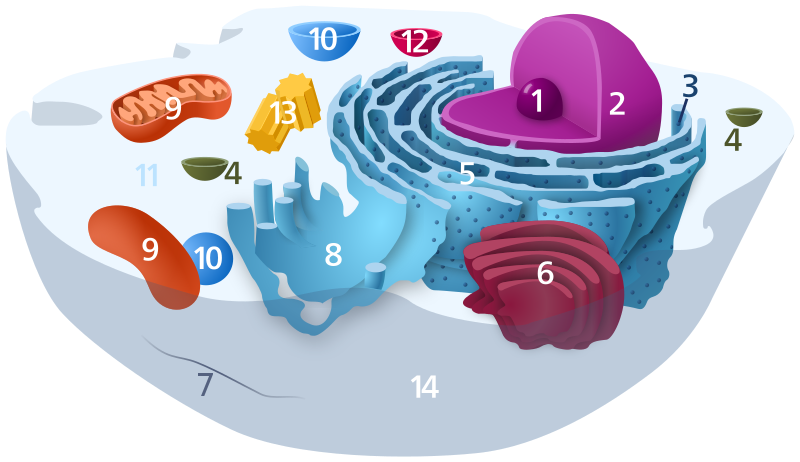https://www.youtube.com/watch?v=AIzEjm7O11M&feature=youtu.be
The purpose of these series of notes is not to convert into
new researchers, only to provide a basic set of ideas to understand some work. Entwined are descriptions
of some kingdoms, for some botany, entomology etc. are also needed and thrown
in. 99.99% human believe that aging is natural. I don't, and have reasons to believe in life extensions before expected death naturally and even widespread life extension in USA by end of 2020. Any life-extension would dwarf every political dispute ever.
Life is cellular. Less than a cell are viruses.
They are perfect salts and reproduce only by invading a host. Routinely, they attack
true unicellular beings called bacteria (or archea etc). This attack and
destruction can be utilized for narrow spectrum antibiotics against resistant
bacteria!
Most important to any life is a cell. A cell for us the main
DNA and 0 to 2000 mitochondria. 0 in red blood cells to 2000 in liver
cells. Mitochondria have their own DNA
and give rise to own diseases and aging However we ignore aging from it,
focusing on main DNA in the nucleus.
The study of aging -
gerontology - is a relatively new science that has made incredible progress
over the last 30 years. In the past, scientists looked for a single theory that
explained aging. There are two main groups of aging theories. The first group
states that aging is natural and programmed into the body, while the second
group of aging theories says that aging is a result of damage which is
accumulated over time. In the end, aging is a complex interaction of genetics,
chemistry, physiology, and behavior.
By understanding and describing how we age, researchers
have developed several different theories of aging. The two categories are
programmed theories and error theories.
- Programmed Theories assert
that the human body is designed to age and there is a certain biological
timeline that our bodies follow.
- Programmed
Longevity: Aging is caused by certain genes
switching on and off over time.
- Endocrine Theory: Changes
in hormones control aging.
- Immunological Theory: The
immune system is programmed to decline over time, leaving people more
susceptible to diseases.
- Error
Theories assert that aging is caused by environmental
damage to our body's systems, which accumulates over time.
- Wear and Tear: Cells
and tissues simply wear out.
- Rates of Living: The
faster an organism uses oxygen, the shorter it lives.
- Cross-Linking: Cross-linked
proteins accumulate and slow down body processes.
- Free Radicals: Free
radicals cause damage to cells that eventually impairs function.
- Somatic DNA Damage: Genetic mutations cause cells to
malfunction.
I have no toleration towards people who subscribe to
programmed theories, even if they were to be mostly right because if there is
any man-effort in challenging the gods, that belief weakens my morale!
Genetics and Aging
Studies have demonstrated that genetics can play a major
role in aging. When researchers adjust the genes in certain mice, yeast cells,
and other organisms, they can almost double the lifespan of these creatures.
The meaning of these experiments for people is not known, but researchers think
that genetics account for up to 35 percent of the variation in aging among
people. Some key concepts in genetics and aging include:
- Longevity Genes: There are specific genes which help
a person live longer.
- Cell Senescence: The
process by which cells deteriorate over time.
- Telomeres: Structures
on the end of DNA that eventually are depleted, resulting in cells ceasing
to replicate.
- Stem
Cells: These cells can become any type of cell in the
body and hold promise to repair damage caused by aging.
Biochemistry
No matter what genes you have inherited, your body is
continually undergoing complex biochemical reactions. Some of these reactions
cause damage and, ultimately, aging in the body. Studying these complex
reactions is helping researchers understand how the body changes as it ages. Important
concepts in the biochemistry of aging include:
- Free Radicals: Unstable oxygen molecules which can
damage cells.
- Protein
Cross-Linking: Excess sugars in the bloodstream can
cause protein molecules to literally stick together.
- DNA
Repair: For unknown reasons, the systems in the body
to repair DNA seem to become less effective in older people.
- Heat
Shock Proteins: These proteins help cells survive
stress and are present in fewer numbers in older people.
- Hormones: The
body's hormones change as we age, causing many shifts in organ systems and
other functions.
Body Systems
As we age, our body's organs and other systems make
changes. These changes alter our susceptibility to various diseases.
Researchers are just beginning to understand the processes that cause changes
over time in our body systems. Understanding these processes is important
because many of the effects of aging are first noticed in our body systems.
Here is a brief overview of how body systems age:
- Heart Aging: The
heart muscle thickens with age as a response to the thickening of the
arteries. This thicker heart has a lower maximum pumping rate.
- Immune
System Aging: T cells take longer to replenish in
older people and their ability to function declines.
- Arteries
and Aging: Arteries usually to stiffen with age,
making it more difficult for the heart to pump blood through them.
- Lung
Aging: The maximum capacity of the lungs may decrease
as much as 40 percent between ages 20 and 70.
- Brain
Aging: As the brain ages, some of the connections
between neurons seem to be reduced or less efficient. This is not yet well
understood.
- Kidney
Aging: The kidneys become less efficient at cleaning
waste from the body.
- Bladder Aging: The
total capacity of the bladder declines and tissues may atrophy, causing
incontinence.
- Body
Fat and Aging: Body fat increases until middle age
and then weight typically begins to decrease. The body fat also moves
deeper in the body as we age.
- Muscle
Aging: Muscle tone declines about 22 percent by age
70, though exercise can slow this decline.
- Bone
Aging: Starting at age 35, our bones begin to lose
density. Walking, running and resistance training can slow this process.
- Sight
and Aging: Starting in the 40s, difficulty seeing
close detail may begin.
- Hearing and Aging: As
people age, the ability to hear high frequencies declines.
Behavioral Factors
The good news is that many of these causes of aging can
be modified through your behaviors:
- By eating foods
loaded with antioxidants, you can minimize damage
caused by free radicals.
- By exercising,
you can limit bone and muscle loss.
- By keeping your cholesterol low, you can slow the
hardening of your arteries and protect your heart.
- By practicing mental
fitness, you can keep your brain sharp.
Lifestyle
factors have also been shown to extend life. Rats and mice on a
calorie restricted diet (30 percent fewer daily calories) live up to 40 percent
longer. Positive thinking has
also been shown to extend life in people by up to 7.5 years.
Cell Biology
Components of a typical animal cell:
12. Lysosome
Remember that a cell does ALL the things that a life does,
all without any magic, spirituality etc, by simple chemistry in my thinking. It
is simple if known, very hard if not. Energy is produced by Krebs cycle from
food particles, which are carbohydrate, protein or fat through Krebs cycle.
This very complicated cycle is idealized as three sub cycles with one tracer
molecule. The three tracers are NAD+, ATP and rest of citric acid cycle. NAD
which in turn can be synthesized or reused by salvage cycle from the waste
products of the previous sub cycle. Synthesis from amino acids is rare. Salvage
step is constructed from NMN. NR makes
NMN with the NAMPT filter. Best idealization in my mind is that NMN is one step
away while NR is two steps away from NAD+ we need. Direct NAD+ is a bad idea. Every
step in biology is about 10% from bio-availability. NAD+ is produced inside
mitochondria.
Bioavailability is great engineering block on all bioscience!
Consider CoQ10 which is required by the ATP sub cycle. There
are commercial losses before eating. Then there are stomach wall losses, while
the molecule enters the blood stream. Then there are cell absorption losses.
Finally there are losses to mitochondrial wall. There is always the limiting
concentration of the safe carriage of the chemical in blood. So you can at most
ingest 1000 mg of CoQ10 is the safe limit on ingesting. Lucky to get 10 mg on
all mitochondria!
Science is about determining effects, doctors are really
engineers that determine what is needed, then package the needs based on
quantity, time and dosage considering the side effects.
Bioavailability is crucial.
It is. So low for glutathione anti-oxidant and melanin
reducer (skin whitens). So much that useless in quaff form. Best injected into
bloodstream by a drip. That means a medical establishment, common in Korea and
opening in India slowly. In both cultures, fairness of skin enhances marriage
value! Another is resveratrol.
It is the latest failure – great bioscience but poor engineering with
catastrophic unpassable bio-availability failures.
What is Coq10?
It is a vitamin like substance which acts as a usefulanti-oxidant in ATP production and thus helps the heart muscle with
mitochondria-rich cells. I recommend it at 400 mg per day in divided doses to
all above 60, independent of need, solely for Aging disease.
What is called (Arun neologism) a wittig form?
By witting
reaction, a form of CoQ10 exists without losses in mitochondrial absorption.
Not surpsingly, this form called Mitoq needs only 5mg to equal 500 mg of CoQ10!
The general concept is conversion of any molecule to a form that delivers the
base molecule without losses at mitochondria.
What more about wittig forms?
There are no wittig forms that came from literature
searches except one, the skq1 molecule
similar to Mitoq, is loved by Russians and being human tested for anti-aging
properties. The wiitigified anti-oxidant is however plant based. Mitoq I
suspect has Anti-aging
properties not tested properly because it is very pricy ($1-2 per day) (link
discounted as sales-pitch). SKQ1
has been approved for human use in Russia! Sold in drug stores!
In many ways 2018 is a water-shed year between classic
think and new quantum-think. The old dreams will cease to realistic, new
dreams will be radically different. I envy those being born. It is all about
exponential speed up. An Arab fighter of 1000AD would not have much to learn in
1500 in launch of ships to America. The world changed radically between 1500
and 2000. That difference now happens in 20 years! About others I don’t know,
but I still remember CS MTech (1975-1977) at IIT Kanpur and me trying to guess
what humans would do with projected IBM mainframe on a chip! There was no
internet, Microsoft, Google or Apple or Facebook or mobile phens then! Even more shocking is
about encryption in 2000 and today! In 2000AD, I saved for a Gigabyte drive and
128K memory. My latest purchase is 8 GB RAM and 4 TB disks
.
Past the watershed is my phone-sleeve (surrounds any phone for) universal panic button, reminder's to eat medicine - programmable sleeve not software, mobiles that can do lot more using local AI, 5G and killing of TV. Welcome to the 2nd industrial revolution, WHERE DEATH IS RARE AND 1ST GENETIC REVOLUTION WHERE DEBILITATION IS RARE..
Stem cells
Past the watershed is my phone-sleeve (surrounds any phone for) universal panic button, reminder's to eat medicine - programmable sleeve not software, mobiles that can do lot more using local AI, 5G and killing of TV. Welcome to the 2nd industrial revolution, WHERE DEATH IS RARE AND 1ST GENETIC REVOLUTION WHERE DEBILITATION IS RARE..
Stem cells
A human is formed from union of male and female pluripotent cell repatedly splitting and specializing. Apoptosis message are generated to delete cells produced, The entire process is probabilistic. Biologists classify cells whicch are not in their final specialization into pluripotent 9all can form) to multipotent Mesenchymal stem cells or MSC. Most early researchers used human PSC obtained from abortions. Nowadays iPS cells (induced) exist which are artificially created.
Mesenchymal stem cells are multipotent stromal cells that can differentiate into a variety of cell types, including osteoblasts (bone cells), chondrocytes(cartilage cells), myocytes (muscle cells) and adipocytes (fat cells which give rise to marrow adipose tissue).
So called iPS are created many ways - one is small chemical/biological modifications of extracted bone marrow from the patient. These can be coaxed into dopamin bearing cells for humans!








